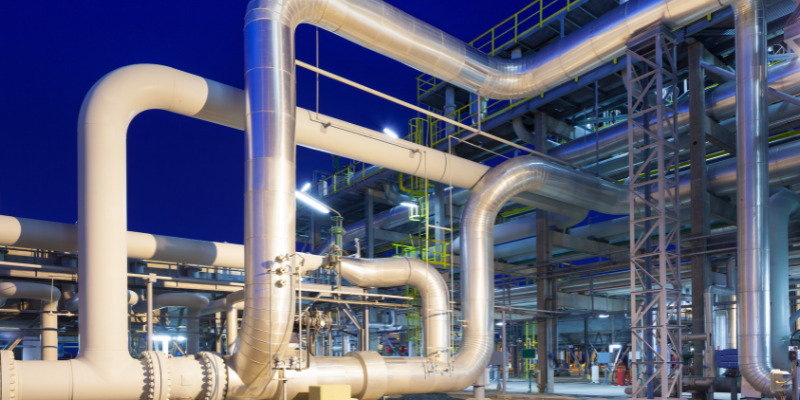Direct Benefits of Vent Gas Capture Technology in Natural Gas Operations

Vent Gas Capture Systems (VGCS) convert routine vent streams into useful gas while maintaining zero or near-zero backpressure at the source. The result is measurable emissions reduction, cleaner reporting, and improved site efficiency without disrupting existing equipment.
1. Helps Meet Environmental Regulations
VGCS supports compliance with flaring and venting limits and methane reduction requirements (e.g., AER Directive 060 and applicable provincial/federal standards). Key advantages:
- Conservation over venting: Captured gas is conserved rather than emitted, reducing the likelihood of exceedances at facilities with multiple small sources.
- Better measurement & verification (M&V): Instrumented VGCS (pressure taps, differential or compact metering) provide auditable data for conservation and emissions inventories, improving the accuracy of regulatory reports.
- Lower enforcement exposure: Reducing routine vent volumes and improving record quality decreases the risk of notices, penalties, and operational restrictions tied to non-compliance.
- LDAR alignment: VGCS complements leak detection and repair by shrinking baseline emissions, making true leaks easier to detect and prioritize.
2. Significant Methane Emission Reduction
Methane has a high short-term global warming potential; eliminating routine venting is one of the fastest ways to cut a site’s footprint.
- Direct methane abatement: VGCS captures continuous and intermittent vents (e.g., controller bleed, packing vents, crankcase vents), turning them into usable gas instead of atmospheric releases.
- Supports ESG targets: Quantified recovery feeds corporate methane-intensity metrics and sustainability disclosures with defensible data.
- Portfolio impact: Deploying standardized VGCS across pads and satellites enables repeatable reductions, helping companies meet internal milestones ahead of regulatory deadlines.
3. Better Efficiency of Operations
Recovered gas is energy and value regained. With the correct tie-in strategy:
- Reintroduce to compressor suction: Routing recovered gas to suction increases throughput of sales gas without adding new rotating equipment.
- Fuel substitution: Redirect to engine fuel headers to offset purchased gas or diesel where appropriate. Sites with high controller bleed can see meaningful fuel displacement.
- Non-emitting uses: Use recovered gas in instrument air packages, heaters, or other controlled applications that prevent re-release.
- Lower losses, better runtime: Reducing uncontrolled venting stabilizes area gas handling, easing flare loads and minimizing nuisance trips tied to pressure fluctuations.
- Minimal footprint: Ejector-based VGCS have no moving parts; with proper liquids management and winterization, they deliver high uptime and low maintenance cost.
4. System Integrity Preservation
A common retrofit risk is inadvertently adding backpressure to vents, which can push emissions elsewhere or stress equipment. Proper VGCS design avoids those pitfalls.
- Zero-backpressure control: A zero-governor/vacuum regulator keeps vent inlets at or near atmospheric pressure, preventing overpressure of seals, diaphragms, and enclosures.
- No cross-flow between sources: Check valves and header control stop gas from migrating from higher-pressure vents into lower-pressure equipment.
- Protects sensitive components: Maintaining design backpressure prevents premature wear on packing, regulators, and housings.
- Fail-safe philosophy: Permissives such as high-header-pressure trip and loss-of-motive fallback to flare ensure the capture system never becomes a pressure source.
Proper Implementation: What Makes A VGCS Perform
To reap the benefits outlined above, operators must note the following:
- Duty definition: Confirm motive, suction, and discharge pressure windows; characterize vent flow peaks and lows; understand gas composition and dew point.
- Liquids & cold weather: Provide upstream separation, eliminate liquid traps, and address hydrate risk with insulation/heat trace and, where justified, chemical injection.
- M&V by design: Include pressure taps and metering points so recovered volumes translate into verifiable reductions in reports.
How 24/7 Compression Can Help Your Business Meet Its Goals
Our Hyper Vent packages apply the zero-backpressure philosophy with ejector sizing for real operating envelopes, clean tie-ins to suction or fuel, and built-in M&V for transparent reporting. If you’re targeting compliance and methane reduction without adding complexity, we can scope, package, and support a field-ready VGCS that drops in with minimal rework. Contact us today to get started!
